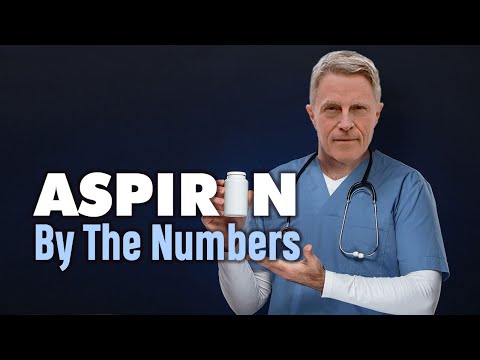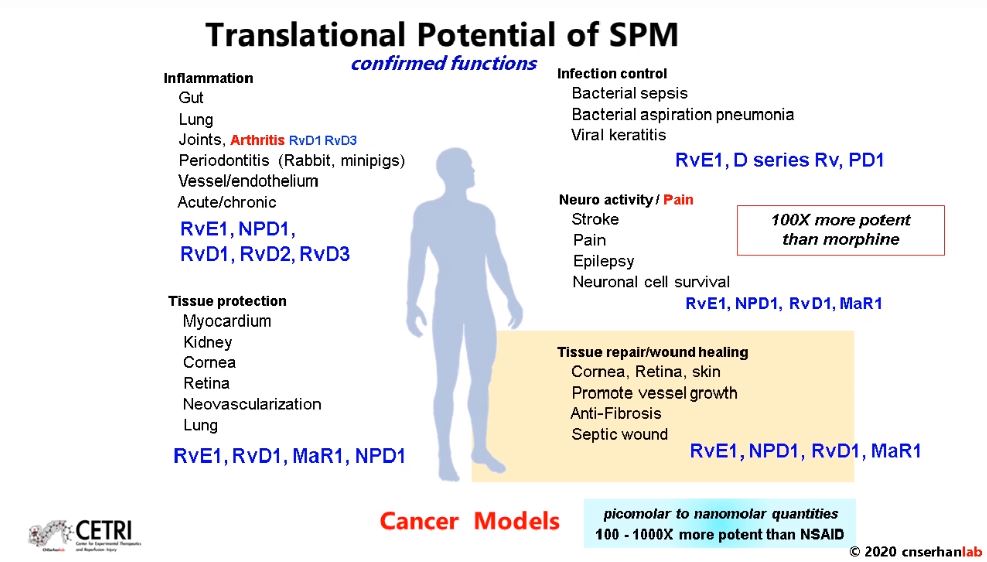Barry Sears, MD, author of the Zone Diet wrote about this in one of his subsequent books. I fail to recall at the moment, which one. But his theory is that low amounts of aspirin [20 mg to 40 mg (a quarter to a half of baby aspirin)] with EPA/DHA can produce resolvins.
Below is a 12 year old video of his explanation. But he doesn’t use the term “resolvins”.
He even applied for a patent with aspirin, sesamol (from sesame oil/seed) and EPA/DHA, in 2015.
In the patent application’s explanation of its approach, it does use the term resolvins.
The first phase of the inflammatory response is the initiation phase mediated in part by pro-inflammatory hormones such as eicosanoids, which are derived from the omega-6 fatty acid arachidonic acid (AA). The second phase of the inflammatory response is the resolution phase mediated in part by pro-resolution mediators such as resolvins and other pro-resolution compounds, which are derived from omega-3 fatty acids such as eicosapentaenoic acid (EPA) and docosahexaenoic acid (DHA). Any imbalance between the initiation phase and resolution phase of the inflammatory response results in chronic low-level inflammation. Chronic low-level inflammation has been associated with many chronic disease conditions including obesity, metabolic syndrome, diabetes, cardiovascular disease, cancer, auto-immune disorders and neurological disorders. Polyunsaturated omega fatty acids have been implicated to play a role in regulating these two significant, yet distinct phases of the inflammatory response. Without adequate levels of omega-3 fatty acids in the target organs, the generation of many of these pro-resolution mediators is compromised. Although it is possible to synthesize these pro-resolution mediators, it is extremely costly and they must be injected. A preferable approach would be to maintain a reservoir of adequate levels of omega-3 fatty acid in every target tissue in the body as well as maintain a constant supply of these pro-resolution mediators in the blood to modulate on-going inflammatory responses. The invention described in this patent application provides such a solution to reduce chronic low-level inflammation by the enhancement of the pro-resolution phase of inflammation as well as reducing the intensity of the initiation phase of inflammation. Methods described in this invention can reduce the production of AA formation as well as increase the formation of pro-resolution mediators such as resolvins derived from omega-3 fatty acids to accelerate the resolution of the acute inflammatory response by reducing chronic low-level inflammation thus significantly enhancing the therapeutic potential of products containing omega-3 fatty acids to treat a wide number of chronic disease conditions.
In situations of improperly regulated inflammation response results in chronic low-level inflammation. For example, the initiation phase can be too strong or the resolution phase may be too weak. Left untreated, this situation will result in chronic low-grade inflammation that can lead to a number of chronic conditions including obesity, metabolic syndrome, diabetes, cardiovascular disease, cancer, auto-immune disorders and neurological disorders. A more detailed listing of these conditions can be found in Table 1. Table 1. Conditions That Can Be Improved By Reducing Chronic Low-level inflammation.
Claims
- A composition comprising hydrophobic derivatives of aspirin and/or hydrophobic derivatives of sesamol in combination with eicosapentaenoic acid (EPA) and docosahexaenoic acid (DHA), for reducing chronic low-level inflammation associated with chronic conditions including obesity, metabolic syndrome, diabetes, cardiovascular disease, cancer, auto-immune disorders, ocular and neurological disorders in a mammal.
Thanks for the reminder RapAdmin. I will now take a half baby aspirin with my weekend breakfast sardine omelette. Time to dig out the pill splitter.


